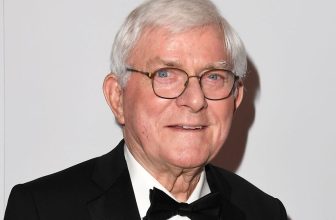
Steven Spielberg and the cinematographers he works with need light to show audiences what they’re filming, yet there is a deeper significance at play with the award-winning director.
Light in a Spielberg movie can be a more subtle affair than it first appears, because it is hidden inside his subconscious. The roots of this were revealed in a fascinating anecdote from his boyhood. The tale has been told by Spielberg many times.
When he was a child, his father, Arnold, shook him out of his sleep and took him out for a drive into the darkness. In an episode that wouldn’t look out of place in one of his own films, the young Spielberg was full of trepidation.

Arnold was an electrical engineer, but he clearly had a touch of showmanship about him. He did not tell his son what was about to take place. After half an hour, surely an eternity for a child, they reached their destination.
The late critic Roger Ebert recalled a conversation about the experience, which he wrote about in 1998 for Time magazine.
Spielberg told Ebert he “saw all these people lying on blankets, looking up at the sky. And my dad spread out a blanket. We lay down and looked at the sky, and I saw for the first time all these meteors.”
 This stunning example of special effects direct from Mother Nature became a major formative step in the blockbuster director’s development. Who could forget the imagery of blinding lights and dark atmosphere he would go on to realize in 1977’s Close Encounters of the Third Kind? An early draft of this project was even called Watch the Skies.
This stunning example of special effects direct from Mother Nature became a major formative step in the blockbuster director’s development. Who could forget the imagery of blinding lights and dark atmosphere he would go on to realize in 1977’s Close Encounters of the Third Kind? An early draft of this project was even called Watch the Skies.
Spielberg felt fear at his unexpected journey into the night, but also a sense of wonder at what his father revealed to him at the end of the road. He summed it up for Ebert like this: “[But] what didn’t scare me, but was very soothing, was watching this cosmic meteor shower. And I think from that moment on, I never looked at the sky and thought it was a bad place.”
 Close Encounters famously ends with one species meeting another, rather than the typical humans versus aliens narrative. After confusion and hostility, the ultimate message is one of understanding and friendship. There wasn’t much understanding or indeed friendship on the shoot of Jaws, the movie Spielberg committed to celluloid two years before he made his UFO masterpiece.
Close Encounters famously ends with one species meeting another, rather than the typical humans versus aliens narrative. After confusion and hostility, the ultimate message is one of understanding and friendship. There wasn’t much understanding or indeed friendship on the shoot of Jaws, the movie Spielberg committed to celluloid two years before he made his UFO masterpiece.
It was a classic story of misguidedly trying to control nature’s ways, but off screen, it was a case of wrangling a malfunctioning mechanical shark. However, there was a lovely coincidence that occurred during filming, and one that surely would have made Spielberg recall his cosmic past. Strangely enough, it happened in a scene where the main characters were in the midst of reminiscing.
 After the main characters Chief Brody (Roy Scheider), Matt Hooper (Richard Dreyfuss), and wild-eyed fisherman Quint (Robert Shaw) get drunk, compare maritime injuries, and sing “Show Me the Way to Go Home,” they get rudely interrupted by an attack from the giant predator they’re hunting.
After the main characters Chief Brody (Roy Scheider), Matt Hooper (Richard Dreyfuss), and wild-eyed fisherman Quint (Robert Shaw) get drunk, compare maritime injuries, and sing “Show Me the Way to Go Home,” they get rudely interrupted by an attack from the giant predator they’re hunting.
Scrabbling out on deck, they struggle to get their act together in the dim light. Brody readies his gun, but then all goes quiet. That’s when a shooting star comes streaking across the sky in the background. This is followed by another star in the frame of a solitary shot of Quint’s vessel, the Orca.
 Like many who watched this movie, I believed they had added these for dramatic effect in post-production. This wasn’t the case, as the 1995 documentary, The Making of Steven Spielberg’s Jaws, uncovered. Unbelievably, a real shooting star had raced across the sky at that exact moment. The sky had filled with light for what appeared to be purely magical reasons.
Like many who watched this movie, I believed they had added these for dramatic effect in post-production. This wasn’t the case, as the 1995 documentary, The Making of Steven Spielberg’s Jaws, uncovered. Unbelievably, a real shooting star had raced across the sky at that exact moment. The sky had filled with light for what appeared to be purely magical reasons.
If you wanted to be sentimental, and Spielberg is often accused of that, you could say Arnold was sending a signal that he approved of what was going on. Or you could say Spielberg was one lucky filmmaker… he certainly needed it the way that shoot went.





GIPHY App Key not set. Please check settings